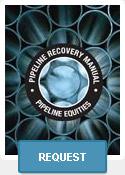Pipeline Equities
PO Box 571977
Houston, Texas 77257
Phone: 713-623-0690
Pipeline Recovery
excavation & removal
Damage Assessment
of easements
Pipeline Appraisal
pipeline property valuation
Pipeline Equities
PO Box 571977
Houston, Texas 77257
Phone: 713-623-0690
excavation & removal
of easements
pipeline property valuation
There are hundreds of thousands of miles of idled, out of use orabandoned pipelines that formerly transported oil, gas and products across
the United States. A dictionary definition of abandonment means to “give up entirely”, but this is not true in the realm of pipeline ownership. The termand practice of abandonment is strictly open to interpretation. Pipeline companies like to say a pipeline is abandoned for compliance reasons so
that they will no longer need to maintain the right of way and pay jurisdictional taxes. In these cases, the companies are free of scrutiny and
can keep the pipeline and the easement for some future need at a greatly reduced cost. There is really no incentive to sell or otherwise dispose of
these idled pipelines. The practice is termed in place pipeline abandonment.
This era may be coming to an end. Over the next three to five years state and federal regulators and lawmakers will move to make definite
requirements regarding the disposition of idled and out of use (abandoned) pipelines. The reasons: potential hazards to landowners and land users,
expense of removal in congested and growing areas, and awareness of rights of landowner on whose property the pipelines are located. In the
future, pipeline companies will be required to remove pipelines if they are “abandoned” or if they have indicated an intent to abandon via lack of
maintenance, lowering of taxes or not paying taxes, removal of company signage, etc.
Current case law concerning abandonment of pipelines and actual transfer of ownership is built around the precepts of cessation of
usage of a pipeline and/or intent to abandon that pipeline. Either way, there could be a flurry of regulatory activity and clarification in the pipeline
segment regarding idled or abandoned pipelines. Pipeline companies might be required to remove them or at the very least, the companies or
entities owning the lines will be required to obtain permission from landowners prior to abandonment procedures of any sort. The days of in
place abandonment of pipelines are ending.
This is the most compelling reason for pipeline recycling. Clean up your mess before someone makes you do it. It is far cheaper and easier to take
care of responsibilities on your terms rather than on the terms of a state or federal bureaucrat who neither knows or cares about the ways and woes
of the industry.
The second reason for recycling of pipelines is cost. Few companies are aware of the real costs of owning idled pipelines. The many taxes involved
often go unquestioned and are paid accordingly. One calls and the personnel involved are unnoticed expenses and the occasional relocation
expense around new construction of highways and subdivisions seem necessary.
In this era of extremely expensive commodity costs, it seems foolish not to recycle pipelines through rehabilitation. In reality, we are talking about
steel in tubular form. The cost of new 8″ line pipe ready to go into a pipeline can cost upwards of $35 per foot. This same size and grade can
be excavated and rehabilitated for less than one third of that cost. Why would a company not remove and rehab an old line that has outlasted its
usefulness in one location and move it to another. Many crude oil pipelines in East and West Texas were originally laid in Oklahoma. When those
oilfields began to play out in the nineteen twenties, they were removed and transferred to Texas (after rehab).
Pipeline Equities, a Houston pipeline removal and rehabilitation firm recently removed one of these twice laid pipelines for shipment to Mexico for a copper mine slurry system and to Vietnam for use as a water transportation line. Again, at less than one third
of the cost of new. The pipe is eighty five years old. The uses for this tubular steel are many. Thousands of tons annually go to
the piling market to shore up anything that needs additional strength or shoring up. A large amount of 8″, 10″ and 12″ is used for surface casing in
oil and gas drilling. Hundreds of other uses exist.
Taking up pipeline onshore is much the same as laying it. Pipeline Equities uses a specially equipped track hoe to excavate the pipe and lift it out of
the ditch. This is probably the key part of the entire process as a good track hoe operator can produce good pipe while a poor operator can make
junk out of the entire line. After the pipe is pulled out of the ditch in one hundred to two hundred foot sections, a crew cuts the sections at the
welds or connection locations with saws or torches. Generally these cuts are made in twenty, forty or sixty foot intervals. The best way is to cut in
forty foot sections as most truck trailers can load these lengths. A dozer then backfills the ditch and dresses the right of way. A front end loader can
be utilized to load the pipe on trucks for transport or special forks can be mounted on the track hoe to load without the extra piece of equipment.
Most lines can be removed successfully with two pieces of equipment.
If proper procedures or undertaken, the coating can be removed on location or transported to a cleaning yard. Pipeline Equities crews are
environmentally certified to handle coating waste in either way. It this point, the pipe can be straightened on location with portable straightening
machines as some lengths will come out bowed or crooked. Beveling of each end where the pipe was torch cut or saw cut is a necessary
procedure if the pipe is to be reused as line pipe or as preparation for threading if the pipe is to be used in a down hole application such as
surface casing.
Pipeline Equities has designed special portable equipment to straighten, bevel and clean, and de dent line pipe on location. The ability
to take care of these tasks on site saves tremendous amounts of time and money. Pipeline Equities is one of three companies in the world with this
capability.
The key to a smooth operation in take up of pipelines is getting along with the landowners. When you take the position that you are doing the
landowner a favor by removing the pipeline and thus returning the right of way or easement to him is generally well received. This can be done often
in lieu of payment of damages as most are excited to get an easement removed from their title. The main task is to have good relations with the
parties involved. The gift of a joint or two or pipe along the way for culvert use to a farmer or rancher is a good practice for any take up crew. Pipeline
Equities keeps trained right of way agents on staff to meet these needs.
There are about one hundred and fifty companies that resell rehabilitated line pipe to the ultimate customer. Each one of these specializes in niche
markets. For example, there are certain companies that will only buy 16″, 18″ or 20″ pipe as their customers use these sizes for mouse hole or rat
hole application for drilling operations in oil and gas onshore drilling. This application alone consumes more than 25,000′ per month in the U. S.
Eight inch and ten inch line pipe converted to surface casing in drilling operations can easily use up 150,000′ per month and still another sales
operation caters to this type of customer. There are piling customers who sell to piling contractors and others who make and sell cattle guards and
corrals to ranchers and cattle feed lot operators. There are guard rail, flag pole and culvert customers for various sizes, grades and weights of pipe.

Fill out the short form below to receive our Pipeline Recovery Manual.
Sign up for our free newsletter to receive your complimentary copy of our Pipeline Recovery Manual that explains our entire process for recovering or salvaging idled or abandoned pipelines.
You will see how we deal with landowners regarding notification and recordings. How to draft a contract of sale with models by: Exxon, Texaco, Koch and others and pictures showing actual work in process.
The manual shows Pipeline Equities job references, right of way releases, agreements and the history and background of Pipeline Equities and managing partner David Howell. These references touch on parts of the six million feet of line removed or handled by the company over the past twenty years.
A line pipe table describing various weights, grades, and pressure ratings of ERW and seamless line pipe is included. This section is an indispensable tool for anyone doing operational word with line pipe.
Also included are extensive glossaries of pipe, pipeline, and right of way terms.

Request a complimentary Pipeline Appraisal Handbook
Fill out this short form and you will be sent a confirmation link to our Newsletter. Once you click the link you will be subscribed to our newsletter and taken to a page where you can download the Pipeline Appraisal Handbook.
This handbook written by David Howell, managing partner of Pipeline Equities is the basic text of any pipeline valuation. All of the essential factors for establishing the value of a pipeline are discussed along with exclusive proprietary formulas and tables essential to a certified appraisal.
Also included are 32 pages of pipe weight and grades tables that cover virtually any situation which might be encountered regarding line pipe requirements. Additionally you’ll find an extensive glossary of pipe, pipeline and right of way terminology is part of the Handbook.
Subjects include: Replacement, Right of Way, Surface Inventory, Throughput, Salvage/Recovery, and comparable sales histories to name a few of the basic factors of pipeline appraisal.
The author recognized a need for a report or “how to” manual for properly appraising pipelines and pipeline right of ways. Currently the work is being done by accounting firms, engineers, and real estate appraisers.
Howell has forty-five years experience in many sectors of the petroleum industry from drilling contractor and oil and gas operator to pipe and supply distribution throughout the world. He has published Tradex Equipment magazine, the Whole World Oil Directory, and the Texas Oil Register.
For the past twenty years, Howell has been almost exclusively engaged in pipeline sales and acquisition, appraisal, removal for salvage, environmental remediation and general pipeline operations.
Howell currently serves on board of the Pipeline Appraisal Institute and is a member of the International Right of Way Association. Howell is a graduate of Texas A&M University – Kingsville and a native of Alice, Texas. He is currently residing in Houston and is the managing partner of Pipeline Equities.